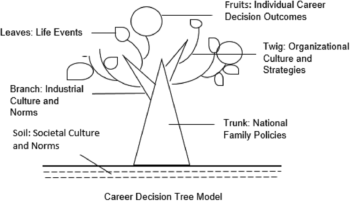How Career Interruptions Affect Women

Career interruptions happen. Job changes, unemployment and injury are all examples of expected or unexpected pauses in a person’s career. For women, though, career interruptions happen at a much higher rate, most commonly to care for a child.
Jia Wang, a professor of human resource development in Texas A&M University’s College of Education & Human Development, has identified five factors that can affect a woman’s career after leaving the workforce for a period of time.
Career attitudes and trajectories
A woman’s feelings and attachment toward her job can drive her career trajectory forward, backward or nowhere at all. Wang’s research shows that women’s perceptions of career, family and self have a significant impact on their career decisions.
She said women who opt to re-enter the workplace after an interruption, like leaving work to raise a child, often face a downward career trajectory.
“Many returners are expected to choose lower-level positions, less prestigious occupations or care-oriented professions with lower pay to balance work and family responsibilities,” Wang said.
Wage penalties
Women may earn lower hourly wages compared to their coworkers as a result of career interruptions. Factors like length of parental leave, full-time or part-time status before having children, number of children, age at first birth and education level all influence wage penalties.
“Generally speaking, when women choose to take a longer career break, have two or more children, are less than 25 years old at first birth and have higher education, they are more likely to receive wage penalties because of career breaks,” Wang said.
Organizational culture
Organizations and fields operate under their own sets of norms that can influence women’s career interruptions and re-entries. Maternal workplace discrimination can be rampant in some organizations, and absent in others.
Wang said that in certain industries like engineering, agriculture, construction and information technology, women feel marginalized and underrepresented because of the masculine norms and gendered culture.
“In addition to cultural barriers, organizational structural constraints also exist in science, engineering and technology fields where women feel they are being pushed out by gendered practices characterized by high job mobility and long work hours,” Wang said.
Government policies
Similar to organizations, Wang found that family policies vary among governments due to historical, economic, cultural and societal differences across the world.
“The empirical evidence we reviewed highlighted an urgent need for more comprehensive and powerful family policies in Asian countries,” Wang said.
Countries like Norway are ahead of the curve. Newly implemented gender-equalizing family policies support Norwegian parents through reduced wage penalties, more leave time for fathers and affordable daycare centers.
Family practice
At the familial level, Wang said a partner’s support plays a vital role in women’s decisions to go back to work, and equally important is a more unbiased division of domestic work and childcare responsibilities.
“For example, an international assignment may mean a career booster for men; but for women, it can be a career stopper because in heteronormative couples, wives usually are the ones who compromise their careers for the sake of their husbands and family needs,” Wang said.
How can we help women re-enter the workplace?
At the individual level, women should engage in critical self-reflection. Wang said the more you know about yourself and what you want in life, the easier it will be to align your career decisions with your wants and needs.
“Across the world, we see efforts being made by women to break socially gendered schemas, to persevere in light of challenges they face, and to have career self-agency,” Wang said. “These efforts are applaudable and must continue.”
For organizations, Wang said creating a supportive culture and women-friendly policies are critical to women’s return to the workplace. She advises organizations to start at the top when changing culture and formulating policies.
“Top leaders of the organization must model their support for women’s effort to come back to work,” Wang said. “A policy, no matter how good it is, is ineffective, unless implemented rigorously.”

Wang stresses that national governments should play a key role in changing perceptions and expectations on women who have career breaks, and learn from other nations for effective practices.
Decision tree model
Wang and doctoral student Xinyi Bian have developed a decision tree model to visually illustrate a variety of factors that influence women’s career decisions. The model captures the complexity of women’s careers and how influencing factors have the power to positively or negatively impact women’s career trajectories.
“The nutritious soil, supportive trunk, strong branches, growing twigs and evenly spaced leaves all matter to what we will harvest from the career tree,” Wang said. “Therefore, a woman’s career decision is not simply an independent decision, rather, it is an outcome of collaborations with multiple parties including family members, employers and policy makers.”
This article by Heather Gillin originally appeared on the College of Education & Human Development website.





